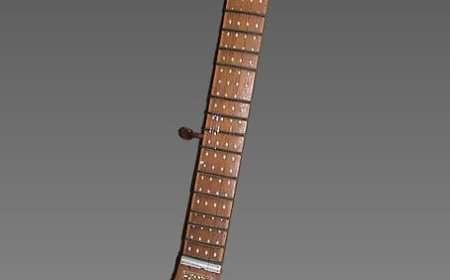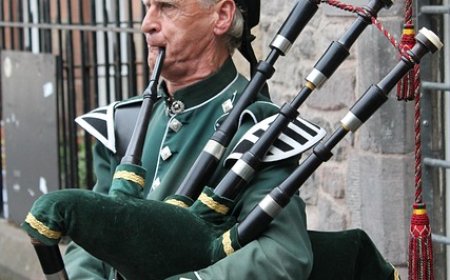tambourine Facts for Kids – Fun Sounds and Rhythm from Around the World
Learn tambourine facts for kids. Discover how this handheld percussion instrument makes jingling sounds, how it’s used in music, and fun ways to play it.

🥁 All About the Tambourine
🥇 Introduction
The tambourine is a small but mighty percussion instrument that adds rhythm, sparkle, and excitement to all kinds of music. Whether it’s shaken, tapped, hit, or scraped, the tambourine is easy to play but hard to master. You’ll hear its jingles and beats in everything from folk and gospel music to orchestral pieces and rock songs.
🎶 What Is a Tambourine?
A tambourine is a handheld percussion instrument that usually consists of a round frame with small metal jingles (called zills) built into it. Some tambourines also have a drumhead stretched over the top, while others are open.
The tambourine makes sound when it is:
- Shaken so the jingles rattle
- Tapped or struck with the hand or fingers
- Hit against the body or leg
- Scraped with the fingers along the head (if it has one)
Tambourines can be used to play both rhythmic patterns and colorful effects, making them popular in many different musical styles.
🧩 Parts of the Tambourine
Although it looks simple, the tambourine includes several important parts:
- Frame (Shell) – The circular wooden or plastic body you hold in your hand.
- Zills (Jingles) – Small pairs of metal discs placed around the frame that rattle when moved.
- Drumhead (optional) – A skin or synthetic surface stretched across the frame for tapping or hitting.
- Grip Hole(s) – Some tambourines have cutouts for your fingers to hold them more easily.
Tambourines come in many sizes, and some are designed for mounting on stands or drum kits.
⚙️ How Does the Tambourine Work?
The tambourine produces sound in two ways: striking and shaking.
When you strike or tap it, the drumhead (if present) makes a sharp sound, and the zills jingle. When you shake it, the zills rattle on their own, producing a light, shimmering sound.
The tambourine’s metal jingles vibrate freely, so even a small movement can produce a lot of sound. Musicians use a combination of:
- Finger rolls
- Backbeats
- One-handed shakes
- Rhythmic tapping
This makes the tambourine incredibly expressive—perfect for both quiet accents and energetic rhythms.
📜 History of the Tambourine
The tambourine is one of the oldest instruments in the world, with roots going back over 2,000 years. Ancient tambourine-like instruments were used in Egypt, Greece, Rome, and the Middle East in religious ceremonies and celebrations.
In the Middle Ages and Renaissance, the tambourine spread through Europe, often played by dancers and traveling musicians. It became popular in folk music in countries like Spain, Italy, and Turkey.
In the 1700s and 1800s, composers like Mozart and Berlioz started using tambourine in classical music. Today, it's a staple in rock bands, gospel choirs, marching bands, and orchestras around the world.
🥁 Famous Tambourine Players
While not always the star, some musicians are known for their tambourine skills and iconic performances:
- Stevie Nicks – Famous for using tambourine in her performances with Fleetwood Mac
- Ray Cooper – Percussionist who has played tambourine for Elton John and others
- Tracy Chapman – Uses tambourine in her folk-style performances
- Karen Carpenter – Played tambourine while singing lead in The Carpenters
- Ritchie Blackmore – Rock guitarist who added tambourine to stage acts for flair
Tambourine is often played by singers, percussionists, and multi-instrumentalists for rhythm and performance energy.
🎶 Learning to Play the Tambourine
The tambourine is a great beginner percussion instrument, but mastering it requires skill and timing. It’s often introduced in elementary music classes, then used in bands, choirs, and theater groups.
Students learning the tambourine will practice:
- Basic rhythm patterns
- Shaking and stopping to control sound
- Tapping with fingers or palms
- Rolling techniques for sustained sounds
- Using syncopation and accents to match music styles
It’s also a great instrument for movement and coordination, making it ideal for young musicians and group performances.
😄 Fun Facts About the Tambourine
- Tambourines were once used in royal courts and religious ceremonies.
- The jingles are officially called “zills”, a word also used in belly dancing.
- Some tambourines have light-up frames or built-in microphones for concerts.
- Famous rock songs like “Hey Mr. Tambourine Man” by Bob Dylan feature this instrument.
- Tambourines are used in dance music, classical, pop, gospel, folk, and world music.
- You can play a tambourine with one hand, two hands, or even your foot!
👧 Kid-Friendly Summary
The tambourine is a fun, round instrument with jingles all around it. You can shake it, tap it, or hit it to make happy, rattling sounds. It’s easy to start playing, and you’ll hear it in many songs and concerts. Tambourines help keep the beat and make the music shine!
📚 Vocabulary Words
Tambourine – A small percussion instrument with jingles, played by hand
Zills – The metal jingles that make the tambourine’s rattling sound
Drumhead – A stretched surface for tapping, found on some tambourines
Frame – The circular body of the tambourine
Rhythm – A pattern of beats in music
Finger roll – A fast, rolling motion used to keep the jingles shaking
Syncopation – Rhythms that emphasize unexpected beats
Percussion – Instruments that make sound when struck or shaken
❓ Interactive Quiz
1. What do the metal jingles on a tambourine do?
A. Add color
B. Ring and rattle
C. Tune the drum
D. Make it louder
2. What is another name for the jingles on a tambourine?
A. Shakers
B. Zills
C. Bells
D. Clinks
3. Which of these is a way to play the tambourine?
A. Blow into it
B. Shake it
C. Bow it
D. Strum it
4. Which famous musician often performed with a tambourine?
A. Beethoven
B. Stevie Nicks
C. Elvis Presley
D. Mozart
5. What type of music might use a tambourine?
A. Rock
B. Gospel
C. Folk
D. All of the above




















































